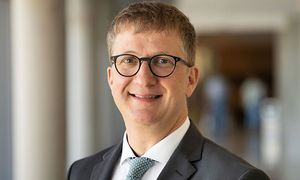Non-verbal communication
Please click here for the German version.
Research areas
During communication in human interaction most of the information is conveyed nonverbally (without words). We use voice tone, facial expressions, eye movements, gestures, body positions, and much more. In some mental disorders, interacting with other people is particularly difficult and often involves disturbances in nonverbal communication. In disorders such as depression or schizophrenia, the ability to communicate nonverbally can be severely impaired, which in turn fosters social exclusion and a worsening of the underlying disorders. Many of these processes can only be observed and understood in human interaction.
Methods
We therefore examine nonverbal skills alone and during social interactions. We use behavioral experiments, video analysis, computer tests, and virtual reality. To understand the neural basis of altered communication skills, we apply functional and structural brain imaging. Finally, we test ways to improve social skills, e.g., with group psychotherapy, virtual reality, or noninvasive brain stimulation, e.g. repetitive magnetic stimulation.
Goals
The goal of this working group is to better understand nonverbal communication in mental disorders and to integrate this knowledge into diagnostic procedures. In addition, we aim to develop new methods to support and improve these important skills.
Team
- Prof. Dr. med. Sebastian Walther
Fon: +49 931 201-77000
E-Mail: Walther_S5@ukw.de - Mira Semmelroch
E-Mail: Semmelroch_M@ukw.de
Publications
The working group's publications can be found here.
Third-party funded projects
Selection of completed third-party funded projects
Head of Hospital
Prof. Dr. med.
Sebastian Walther M.D.
Head of the Department of Psychiatry, Psychosomatics and Psychotherapy
+49 931 201-77000

